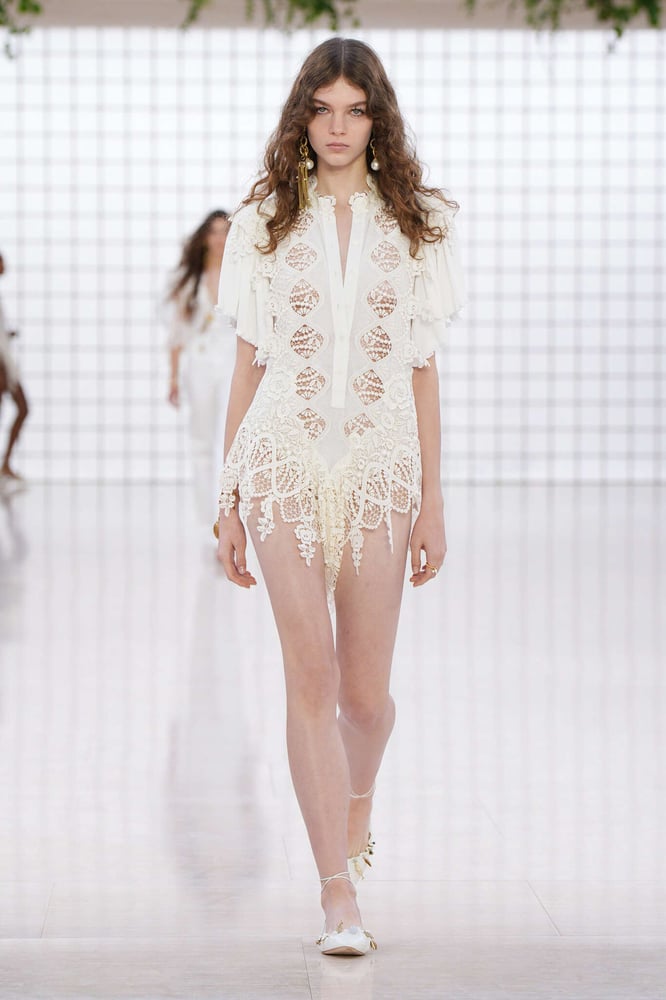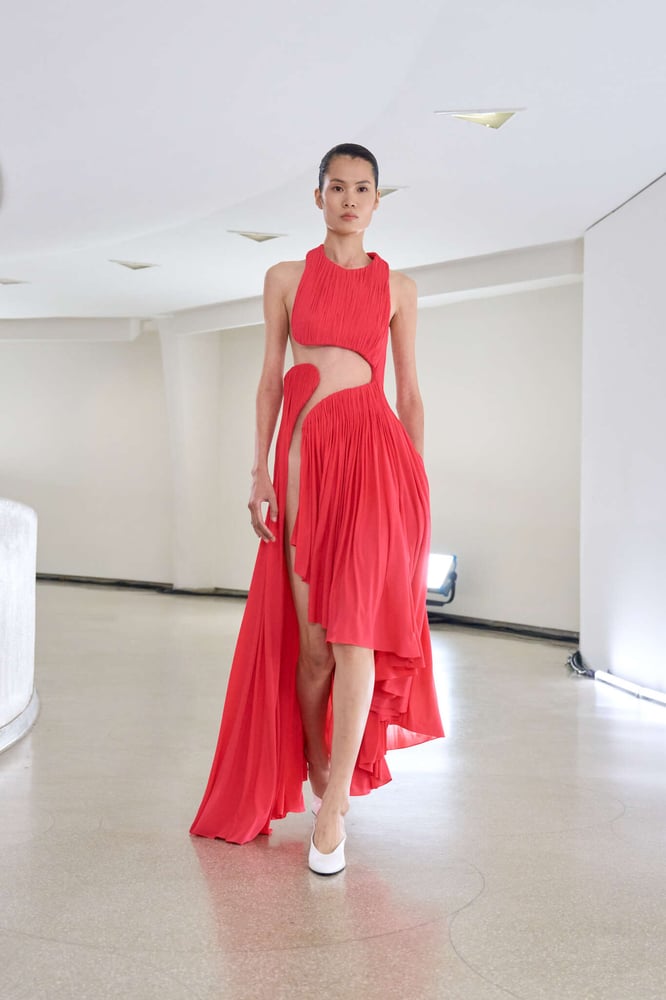Richemont — the owner of Chloé, Alaïa, Dunhill, Cartier and more — revealed its full-year figures on Friday saying the 12 months to the end of March saw a “robust” performance. But while there was good news, there were also some negative figures in the report.
Group sales rose 4% to €21.4 billion with Q4 sales up 8% (or 7% at constant exchange rates) and with its Jewellery Maisons up in double digits for the quarter. Annual gross profit was up 2% at €14.319 billion, although the gross margin fell from 68.1% to 66.9%. Operating profit also fell 7% to £4.467 billion with the operating margin down from 23.3% to 20.9%. But operating profit only fell 4% at constant exchange rates and it included €72 million of non-recurring costs.
Profit for the year from continuing operations was down 1% at €3.762 billion and the loss for the year from discontinued operations was just over €1 billion, narrower than the €1.46 billion of the year before, and mainly due to the non-cash writedown of YNAP. However, final profit for the year was up at €2.75 billion from €2.355 billion.
Year of change
It was a transformational year for the business in which it made a number of key changes, particularly the promotion of Nicolas Bos to CEO; the addition of Italian jewellery Maison Vhernier to the portfolio; and the finalisation of the sale of YNAP to Mytheresa in April. Richemont now holds a 33% stake in the newly created LuxExperience, which owns the YNAP webstores and Mytheresa.
As mentioned, one piece of good news was that the company’s growth was led by its Jewellery Maisons with full-year sales up 8% at actual and constant exchange rates and the operating margin at 31.9%.
Also on the plus side, its ‘Other’ division, which includes the fashion labels, saw sales up 7% at actual and constant exchange rates, although the operating margin was -3.7%. The Fashion & Accessories Maisons’ margin specifically was hit by “inventory provisioning”.
More good news came as it said it saw double-digit growth across almost all regions, although Asia Pacific wasn’t in that group.
Asia Pacific remains a problem for the business and while jewellery was a star category, its Specialist Watchmakers were another problem with sales down 13% and just a 5.3% operating margin.
Chairman Johann Rupert said the performance was robust given the “persistently uncertain macroeconomic and geopolitical environment” as it “maintained our focus on nurturing Maisons’ current and future growth, investing in our distribution network, manufacturing assets and quality craftsmanship.”
He added that after a “resilient” first half, sales performance accelerated in the second part of the year, with a 10% rise in the third quarter followed by the aforementioned 8% in Q4 at actual exchange rates.
Over the year, most regions grew in double digits at both actual and constant exchange rates, more than offsetting the decline in Asia Pacific, led by China, “illustrating the value of our balanced regional footprint”.
Notable growth rates included Europe at 10%, the Americas at 16%, Japan at 25% and the Middle East & Africa at 15% (actual exchange rates). Direct to client sales rose further, driven by both retail and online, representing 76% of overall sales.
Brand strength
Diving deeper into the individual divisions, sales for its ‘Other’ business area reached € 2.8 billion, an increase of 7% at actual and constant exchange rates, underpinned by faster growth in the second half. All regions other than Asia Pacific grew, with notable double-digit performances in the Americas, Europe and Middle East & Africa.
Alaïa recorded another year of strong growth, and Peter Millar maintained its solid momentum. Overall, ready-to-wear sales rose by double-digits across the Maisons, with “notably an encouraging performance from Chloé”.
It added that G/FORE, previously under Peter Millar’s umbrella since its acquisition in 2018, was added to Richemont’s Fashion & Accessories portfolio as a distinct Maison in February. This “marks a significant milestone for the Maison, whose products are sold in top golf shops, resorts, department stores and dedicated retail boutiques, reflecting its remarkable success to date”.
But despite the plus points, the ‘Other’ division’s operating result was a €102 million loss for the year, resulting in the previously referenced negative margin. Within this, Fashion & Accessories Maisons posted a -2% operating margin when excluding targeted inventory provisioning.
The star Jewellery Maisons — Buccellati, Cartier, Van Cleef & Arpels (and Vhernier since October) – saw their sales reach €15.3 billion. Their 8% sales increase, combined with disciplined operating costs and targeted price increases, helped mitigate the impact of higher raw materials costs, notably gold, on profitability. The Jewellery Maisons delivered a €4.9 billion operating profit, up 4% versus the prior year, corresponding to a solid margin of almost 32%.
The poor performance at the Specialist Watchmakers had been previously flagged with the company saying in its H1 report six months ago that a slowdown was affecting volumes. This was led by demand weakness in China, but with greater resilience for high-end price segments.
While the watch market remained subdued in the second half, some improvement was visible outside of China. The 13% sales fall was partly due to the unit’s high exposure to Asia Pacific, particularly to China, while the other regions “showed resilience”. The rate of decline was softer in the second half of the year, with notable growth in the Americas.
While the Maisons “demonstrated discipline on operating expenses, the overall decline in sales had a significant impact on production and fixed operating costs absorption”. In addition, with its HQ and most of its production located in Switzerland, the strengthening Swiss franc weighed on the division’s operating result, which fell to €175 million for the year.
Copyright © 2025 FashionNetwork.com All rights reserved.









